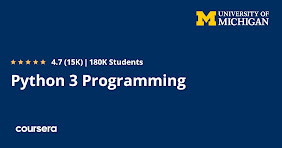Colleagues, the Machine Learning in Trading and Finance program from the New York Institute of Finance and Google Cloud will equip you in Quantitative trading, pairs trading, and momentum trading. You will be able to design basic quantitative trading strategies, build machine learning models using Keras and TensorFlow, build a pair trading strategy prediction model and back test it, and build a momentum-based trading model and back test it. You should have advanced competency in Python programming and familiarity with pertinent libraries for machine learning, such as Scikit-Learn, StatsModels, and Pandas.By the end of the Specialization, you'll understand how to use the capabilities of Google Cloud to develop and deploy serverless, scalable, deep learning, and reinforcement learning models to create trading strategies that can update and train themselves. As a challenge, you're invited to apply the concepts of Reinforcement Learning to use cases in Trading. This program is intended for those who have an understanding of the foundations of Machine Learning at an intermediate level. To successfully complete the exercises within the program, you should have advanced competency in Python programming and familiarity with pertinent libraries for Machine Learning, such as Scikit-Learn, StatsModels, and Pandas; a solid background in ML and statistics (including regression, classification, and basic statistical concepts) and basic knowledge of financial markets (equities, bonds, derivatives, market structure, and hedging). Experience with SQL is recommended.
Enroll today (teams & execs are welcome): https://tinyurl.com/2p993u5m
Download your free Finance, Accounting & Banking - Career Transformation Guide.
Much career success, Lawrence E. Wilson - Financial Certification Academy (share with your team)


.jpeg)
.jpeg)

.jpeg)
.jpeg)



.jpg)
.jpeg)

